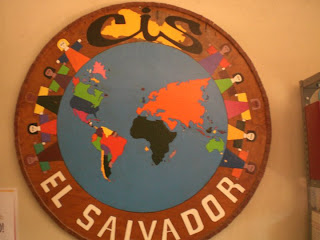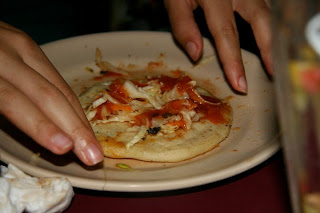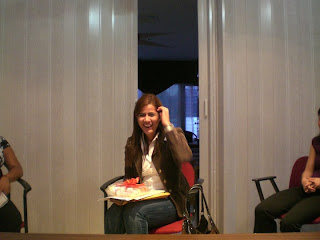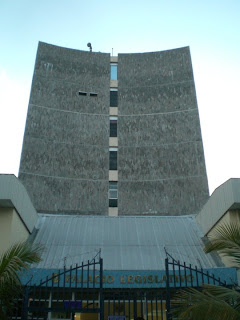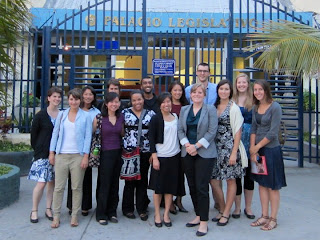Going a little off of my last post about immigration I wanted to end with a post about immigration truths and myths.
The other week we had a conference about immigration. A Guatemalan woman spoke to us about her experience traveling to the US in the hopes of finding a better job to help support her family. She detailed her journey through the harsh landscapes and conditions of the terrain. She also explained how brutal some of the coyotes could be, by demanding certain favors in order to get them across the border. She said she went days without food or water and sometimes would have to resort to eating flowers for some sort of energy. Her story and also a book I have been reading called “They Take Our Jobs! And 20 Other Myths About Immigration,” got me thinking about all the misconceptions there are in the United States about why people immigrate and the problems it creates. I will list a few here:
Myth #1: Immigrants Take American Jobs
“The first fallacy lies in the very concept of “American” jobs. Today’s economy is so globally integrated that the idea of jobs having a national identity is practically useless. In many industries, employers seek to reduce costs by employing the poorest, most vulnerable people. They do this by moving to parts of the world where poverty and inequality create a vulnerable labor force, and by supporting policies that create poverty and inequality at home –including immigration policies that keep immigrants coming and keep them vulnerable. The second fallacy is the notion that immigration and immigrants reduce the number of jobs available to people already in the US. Clearly the relationships between population size and the number of jobs available is not quite as simple as it might seem. The number of jobs in not finite, it is elastic and affected by many factors. Population growth creates jobs at the same time that it provides more people to fill jobs, and population decline decreases the number of jobs at the same time provides fewer people to work at them. Population growth creates jobs because people consume as well as produce: they buy things, they go to movies, they send their children to school, they build houses, they fill their cars with gas, they go to the dentist, they buy food at the store and restaurants. When the population declines, stores, schools and hospitals close, and jobs are lost. This pattern has been seen over and over again in the US.”
Myth #2: Immigrants Don’t Pay Taxes
“Immigrants, no matter what their status, pay the same taxes that citizens do – sales tax, real estate taxes(if they rent or own a home), gasoline taxes. Some immigrants work in the informal economy and are paid under the table in cash, so they don’t have federal and state income taxes, or social security taxes, deducted from their paychecks. However so do some citizens. Every time a kid next door baby-sits, or shovels snow, he or she is working in the informal economy. But workers in the informal economy don’t fare so well. They don’t have access to any of the worker protections that come with formal employment, like minimum wage or health and safety regulations. Workers in the informal economy can’t get unemployment insurance of workers compensation and generally get no benefits from their employer(like health insurance or sick leave or vacation time). Many immigrants however do work in the formal economy, in which case they have all of the same tax deductions from their paychecks as citizens do. Undocumented immigrants who work in the formal economy generally do so by presenting false social security numbers. The Social Security Administration estimates that about three-fourth of undocumented workers do this. Public commentary about this practice is quite angry, although the only ones who lose anything when using false social security numbers are the workers themselves. Taxes are deducted from their paychecks – but if they are undocumented, they still have no access to the benefits they are paying for.”
Myth #3: Immigrants Send Most of What They Earn Out of the Country in the Form of Remittances
“ Remittances are a very important part of the global economy. They often account for a larger portion of poor countries’ income than foreign aid does. (Remittances refers to the money that immigrants send home to family members in the home community). Some portions of the remittances go directly to family members and is sent on food, health care, clothing, home improvement, and education. This kind of spending can have both local and global effects, since many of the products and materials used in these areas are imported. When the money is spent locally, it can also help to improve the local economy. Remittances, then, are one element in an extremely integrated global economy. If we look only at the flow of remittances, it looks like a lot of money is leaving wealthy countries and going to poorer countries. But if we look at the global economy as a system, remittances are just one small piece of a very complex, multidirectional flow.”
If you are interested in reading about more myths, you should buy the book “They Take Our Jobs! And 20 Other Myths About Immigration,” by Aviva Chomsky.
Immigration is a very complex issue but if it weren't for the United States own doing there wouldn't be as much as there is today. The United States needs to create a more fair playing ground for every country and stop taking and depleting resources from poorer countries and exploiting their land and people.
